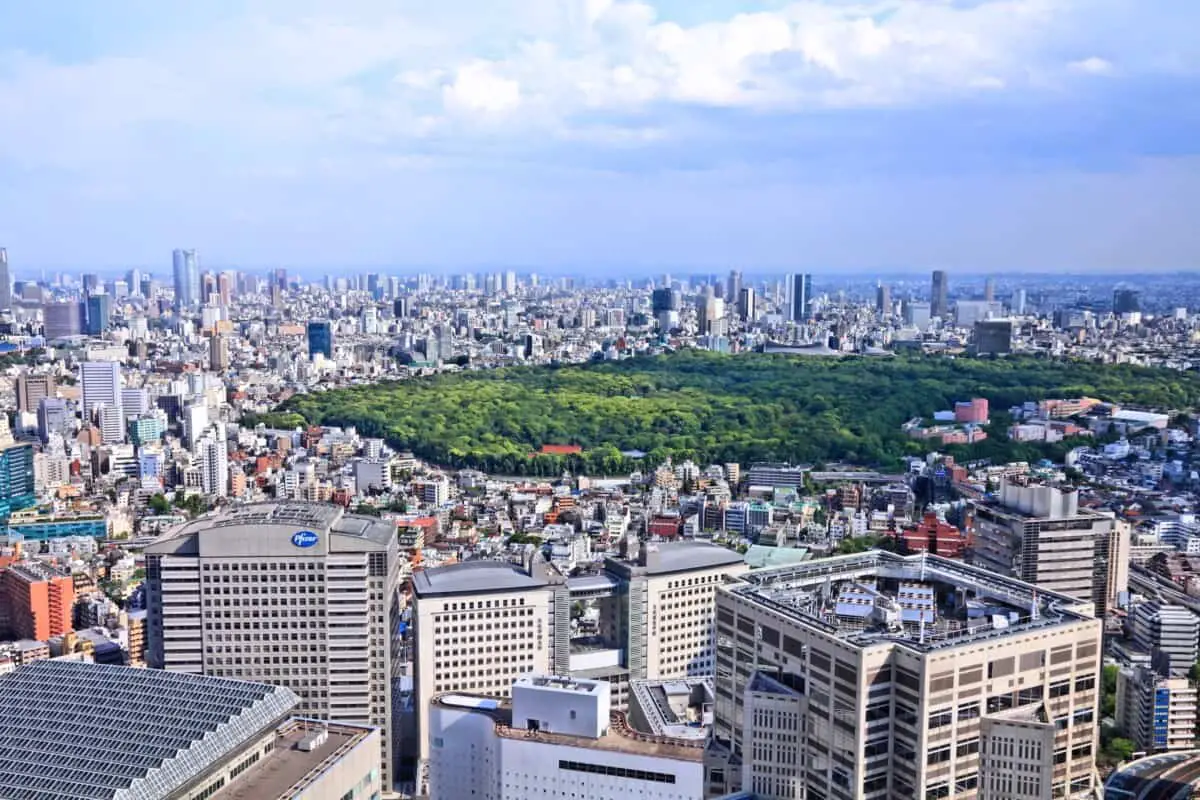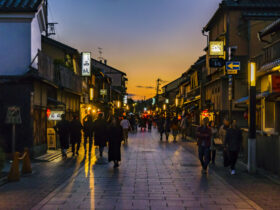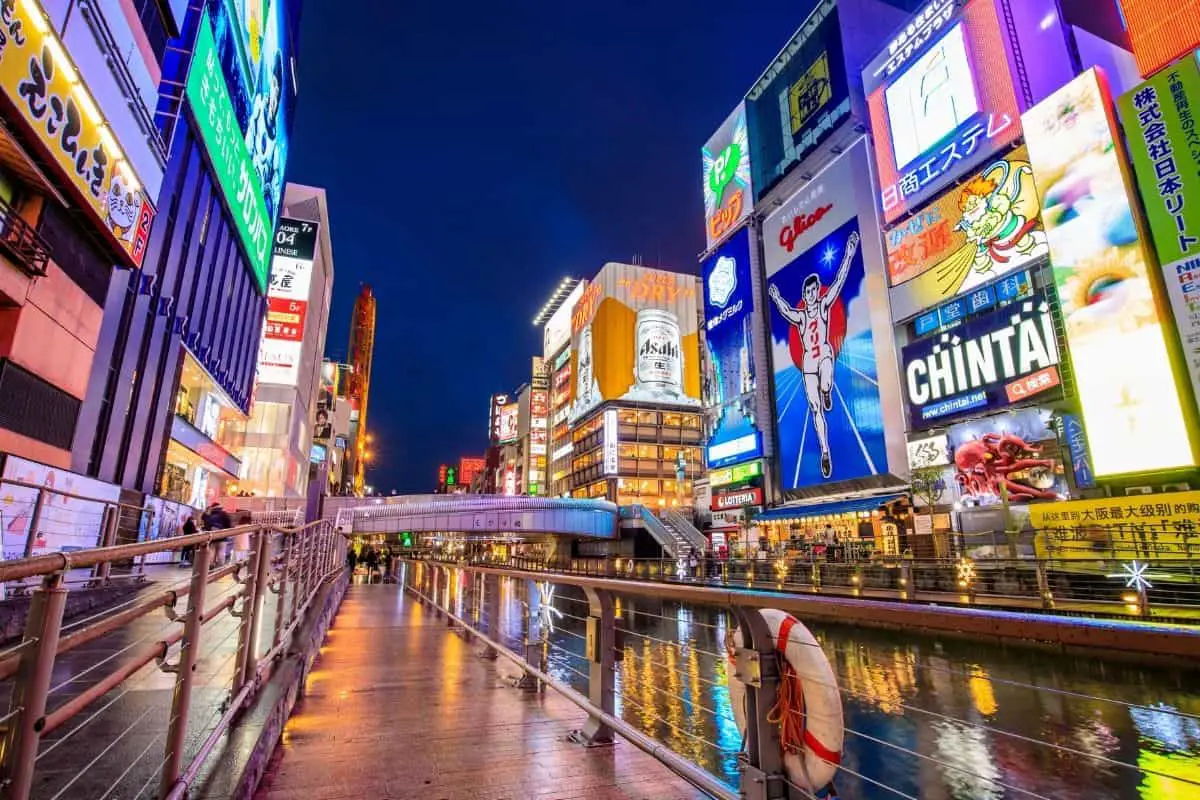If you are visiting Japan, and are looking for a park that offers not just beautiful scenery but an overall experience, the Yoyogi Park in Tokyo is the place to go. There are so many things to do in the park, you could easily spend a day on everything Yoyogi Park has to offer.
Around Yoyogi Park, there are also other interesting things to see and do, making it a wonderful area to explore when in Tokyo.
It’s worth a train ride to Tokyo to spend the day at the park if you’re looking to take in as much of Japan as possible.
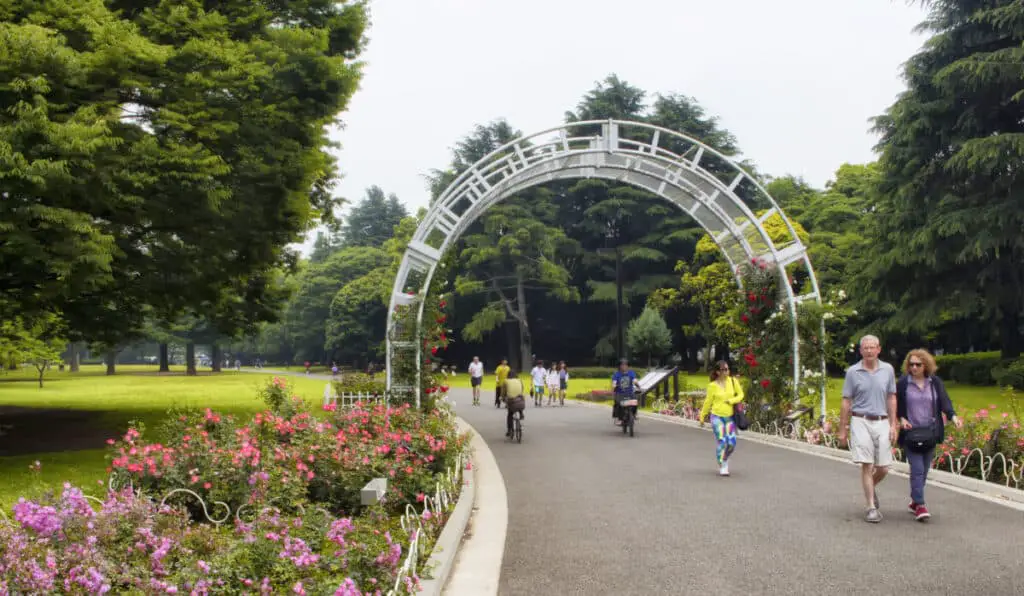
The History Of Yoyogi Park
The open space that is now Yoyogi Park has been used for various purposes over the years. The space was used for several military purposes, such as for drills and military training. At one point, aircraft would also be launched from the area.
When World War II commenced, some military members from the American military lived in the area. Throughout the years that the military reigned over the area, they would also hold various parades and events to celebrate Japan and the military’s efforts.
Some Olympic fans may have heard of Yoyogi Park before, as the Olympic Village when the Olympics were held in Tokyo in 1964. Shortly after the Tokyo Olympics were wrapped up, the area became a park, and has remained one ever since.
The Natural Amenities
The Yoyogi Park, known as Yoyogi-Koen in Japanese, has a lot of beautiful trees, lush green lawns, and even water features such as ponds to see.
The lawns are well-maintained, making them ideal to bring some food and a blanket for a picnic lunch.
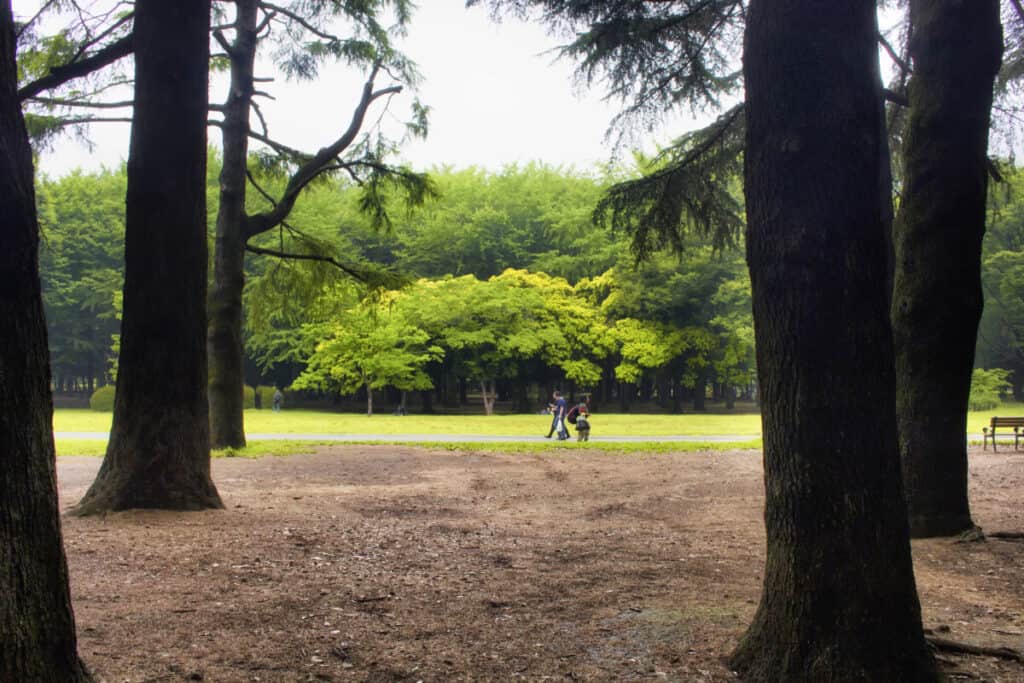
The Central Plaza has a lovely flower garden and a clock tower, and the pond can be found here.
There are also drinking foundations to rehydrate when you’re finished playing sports or doing other activities in the green space.
The Changing Trees
In the Spring, there are some cherry blossom trees that you can see in full, pink bloom. There aren’t a lot of them, but they are quite the sight to see if you do stumble upon them while in bloom.
Ginkgo trees can be found in abundance throughout the park, and the leaves turn to a stunning golden hue when autumn comes.
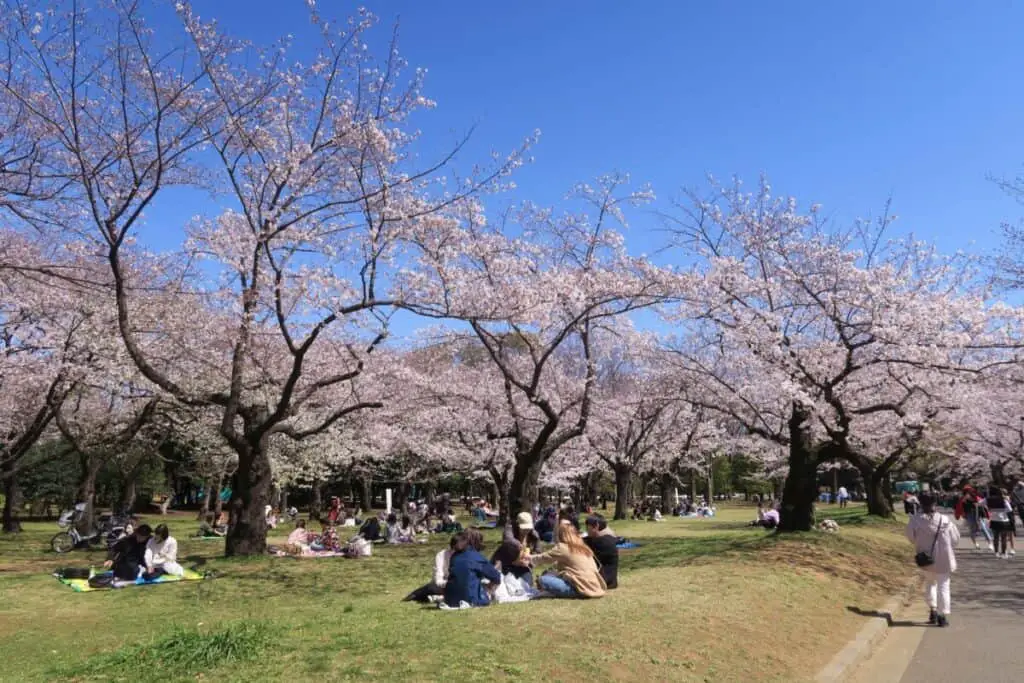
The Other Side Of The Park
There is a bridge in Yoyogi Park that separates the green, nature-filled area of the park from the paved area that can host numerous events.
There are plenty of festivals and other events held in this part of the park all year round. Many cosplayers also enjoy putting on performances in this space.
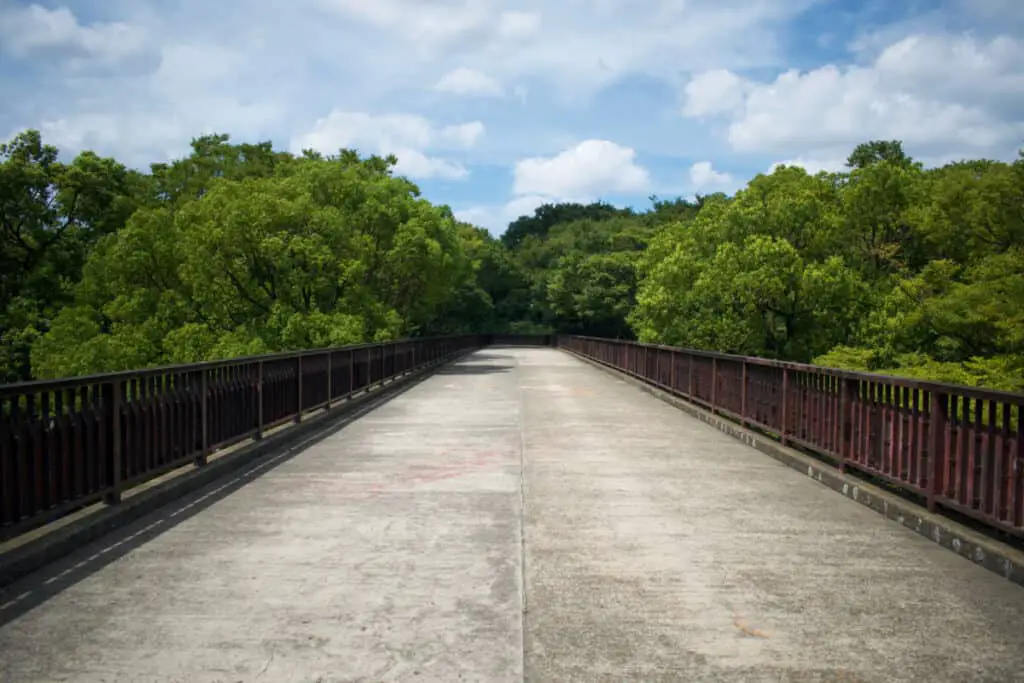
On this site, visitors will also find the Yoyogi National Gymnasium. This gym saw many Olympic events, and currently houses a rink for hockey and other sports facilities.
The gym is also famous for its design, having a unique suspension roof. It was designed by famed architect Kenzo Tange.
The Meiji Jingu Shrine
The Meiji Jingu Shrine is located by the park and draws many visitors to it for its beauty and its surrounding gardens. The shrine was built in dedication to Emperor Meiji in 1920 after he passed in 1912.
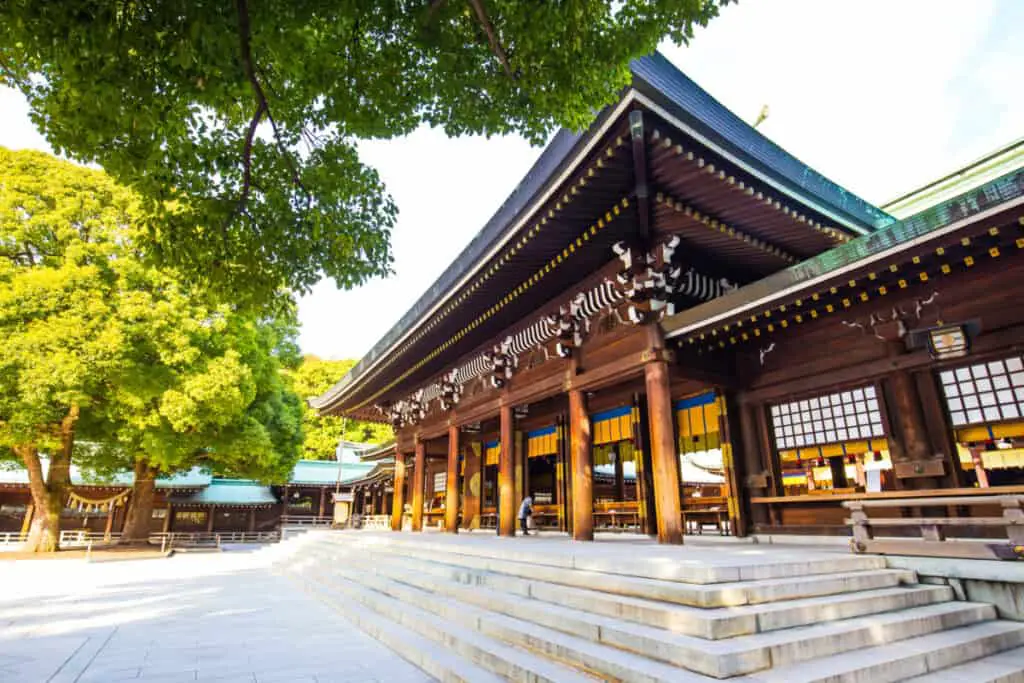
There is an inner and an outer garden, and the shrine itself can be found when entering the inner garden.
The shrine that can currently be viewed is more modern than the original structure, which was destroyed by bombing during World War II.
You can enter the shrine for no cost, and it’s usually open from 6:00 a.m. to 4 p.m. unless otherwise stated. Within the shrine’s building, there is a museum, a restaurant, and a shop among other amenities.
Other Amenities Throughout Yoyogi Park
There are numerous food and drink stands throughout the park to grab a snack or a drink while basking in the shade under one of the beautiful trees.
You can also find little souvenirs and trinkets at some of the stands set up in the park.
You can also find a fenced dog park, a bird sanctuary, memorabilia from the Olympic Village, and a small garden with some seeds brought over from various countries during the Olympics.
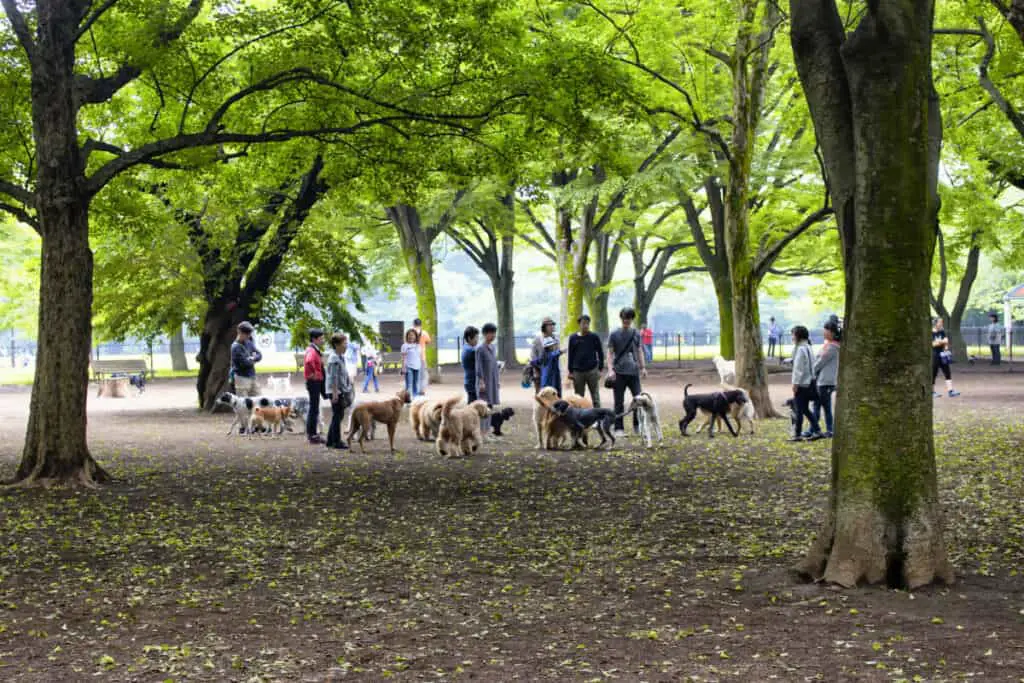
There is also a path for walkers and a path for bikers. If you want to rent a bike and ride throughout the park, you can do so at a rental shop in the park as well.
Festivals And Events
There’s a good chance that no matter when you visit Yoyogi Park, you’ll stumble upon some type of performance, entertainment, or maybe even a festival.
There’s even a stage in the park where you can watch all sorts of performances, from dancing to magic shows to concerts.
On Sundays, you can get a glimpse at Tokyo’s Rockabilly Club, which celebrates the 1950’s rockabilly scene in America by getting dressed up, playing music, and dancing.
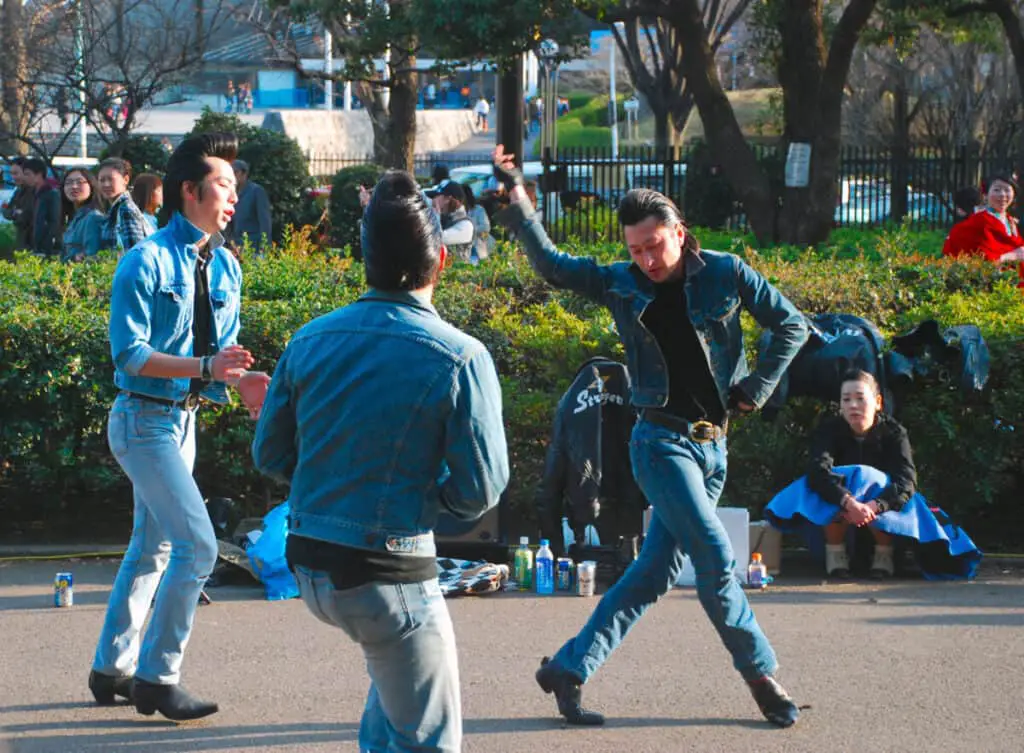
Throughout the year, many worldwide holidays are celebrated in some capacity in the park, including Earth Day and Cinco De Mayo.
Many different food festivals and music festivals can also be enjoyed at the park throughout the year.
International Festivals
There are various festivals held at Yoyogi Park throughout the year to honor various cultures. There is a Thai Festival that tends to draw big crowds, and the festival takes place a few times a year.
Many festivals can be attended during the Spring and Summer. In April, the Cambodian Festival is held, and in May, there is an Okinawan and a Jamaican Festival. In July, there is an Indonesian Festival and a Brazilian Day. August sees the Caribbean and Latin American Festival held in the park.
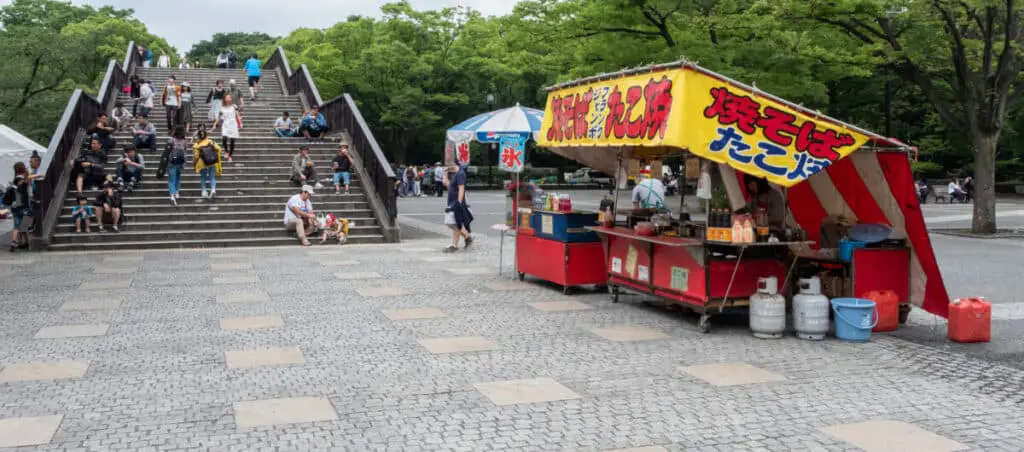
Finally, in September, there are the Indian, Sri Lanken, and Vietnamese Festivals. During these International Festivals, you can enjoy food and music from each of the regions.
Getting To The Park
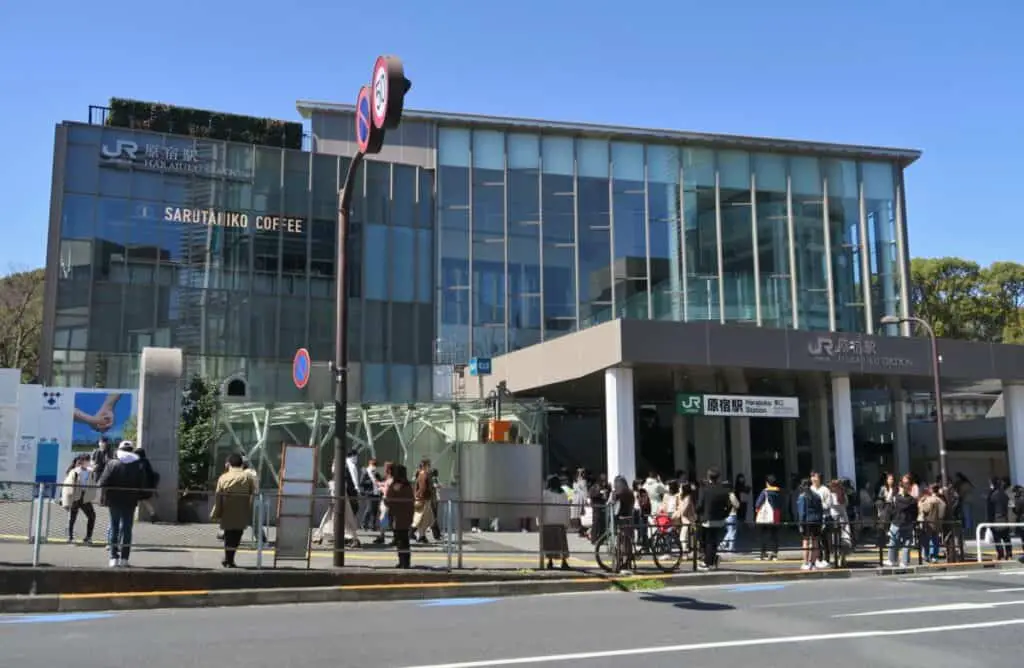
Yoyogi Park Location Via Google Maps
If you are taking the train into Tokyo, you can get off at the Harajuku Station when riding the JR Yamanote train. From there, the park is only a five-minute walk away.

